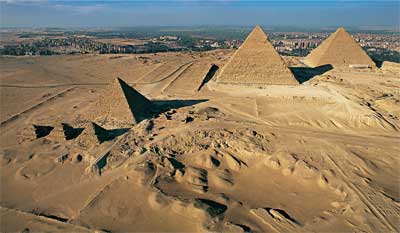|
FOR IMMEDIATE RELEASE
11/12/2006: GIZA 360-DEGREE "QTVR" SITE PANORAMAS CROSS THE 1,000 MARK
One of the more innovative and interactive ways to tour the Giza Necropolis is by QTVR, or Quicktime Virtual Reality. These 360-degree spinning panoramic views allow the user to look all around from a given standpoint at the site. This interactive documentation of the site by QTVR began in 2004, and as of this writing has reached a total of 1,200 QTVR standpoints. Both exterior views of tombs, pyramids and temples, and interior panoramas of chambers are included on the Giza website.
To date, the areas covered in QTVR immersive photography include the Eastern Cemetery (Reisner tombs), Western Cemetery (Reisner, Junker, and Steindorff tombs), G I-South Cemetery (Junker tombs), and Central Field (Hassan tombs). General views around the three pyramids and Sphinx are also available.
Two methods are available for viewing the QTVRs. First, each QTVR is linked to the tombs that appear in its 360-degree viewing area, and a link appears on the primary tomb page for each of those tombs. Secondly, the Visual Search page plots the location of each and every QTVR on an aerial photograph of Giza, with pulsating yellow dots indicating exterior standpoints, and pulsating blue dots indicating interior views.
To see the total list of available QTVR panoramas at any time, simply type "QTVR" into the "Quick Search" box in the red (search) porition of the website's navigation bar at the top of each page.
The goal over time is to provide 360-degree panoramic access to the entire Giza Necropolis. The possibility of adding GIS (Geographical Information System) data to these standpoints is also a future goal.
For more information on how the QTVRs are created, see pp. 77-79 of this article in KMT magazine, or pp. 32-33 of this issue of Egyptian Archaeology magazine.
|
